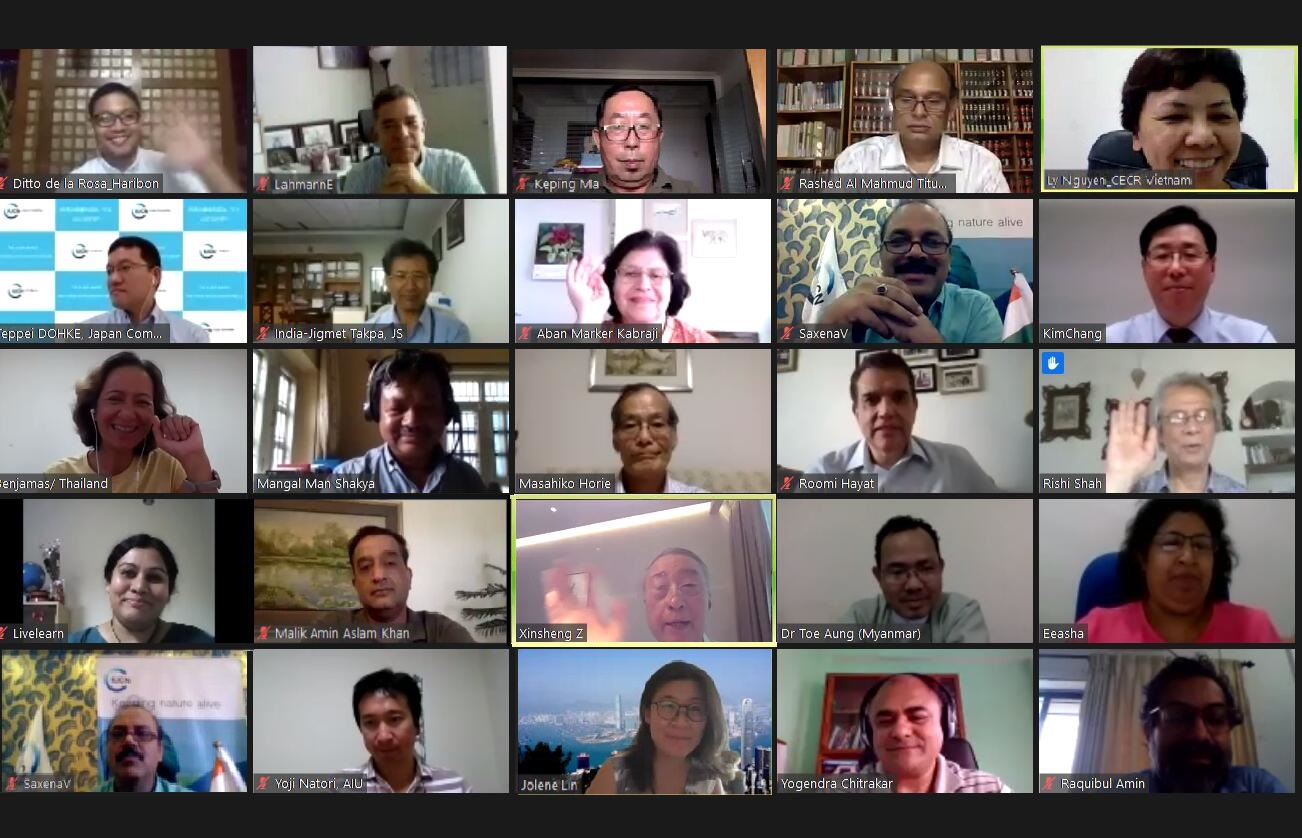On July 29, the Meeting of the IUCN Asia Regional Members Committee (ARMC) was held online. 44 representatives from 18 Asian countries, including China, Pakistan, Japan, Bangladesh, etc. and regional councilors, the IUCN Asia office, attended the meeting. As Chair of the ARMC, Prof. MA Keping from Institute of Botany/Biodiversity Committee, Chinese Academy of Sciences, presided over the meeting.
IUNC President Mr. ZHANG Xinsheng and Ms. Aban Marker Kabraji, the Director of IUCN Asia Regional Office gave opening speeches to review the progress of IUCN in the past year and look forward to the future priorities and opportunities, in particularly some important international congress on nature conservation, such as the IUCN World Conservation Congress (WCC) and the Fifteenth meeting of the Conference of the Parties to the Convention on Biological Diversity (COP 15) to be held next year. The minutes of 2019 ARMC meeting was reviewed and adopted by all participants.
Dr. Enrique J. Lahmann, Global Director for Union Development Group updated the WCC progress. As one of the Candidates for the next IUCN President, Mr. Malik Amin Aslam Khan, IUCN Vice President and Regional Councilor, he stated his campaign and Pakistan's successful practices and examples of nature-based solutions that combine climate change with biodiversity conservation. Representatives from some national committees briefly shared their work in the past year.
Prof. MA Keping introduced the motions in WCC and the participating from Asia region. He hoped that Asian members would be more actively involved in the WCC as well as other IUCN tasks, so as to make their voices heard and positively influence the world conservation process. To promote exchanges and cooperation among members of the Asian region, conferences and forums in various forms will be organized. Communications with the IUCN Secretariat and scientific Committees will be enhanced to enlarge IUCN's professional influence and international leadership in the field of nature conservation.
Currently, there are 278 members in Asia, among which China has the most members (49). More than 2000 scientists from Asia work for the IUCN's six scientific committees. The purpose of this meeting is to summarize the work in the past year, and further promote the communication between the Asian members.

Meeting Online
On July 29, the Meeting of the IUCN Asia Regional Members Committee (ARMC) was held online. 44 representatives from 18 Asian countries, including China, Pakistan, Japan, Bangladesh, etc. and regional councilors, the IUCN Asia office, attended the meeting. As Chair of the ARMC, Prof. MA Keping from Institute of Botany/Biodiversity Committee, Chinese Academy of Sciences, presided over the meeting.
IUNC President Mr. ZHANG Xinsheng and Ms. Aban Marker Kabraji, the Director of IUCN Asia Regional Office gave opening speeches to review the progress of IUCN in the past year and look forward to the future priorities and opportunities, in particularly some important international congress on nature conservation, such as the IUCN World Conservation Congress (WCC) and the Fifteenth meeting of the Conference of the Parties to the Convention on Biological Diversity (COP 15) to be held next year. The minutes of 2019 ARMC meeting was reviewed and adopted by all participants.
Dr. Enrique J. Lahmann, Global Director for Union Development Group updated the WCC progress. As one of the Candidates for the next IUCN President, Mr. Malik Amin Aslam Khan, IUCN Vice President and Regional Councilor, he stated his campaign and Pakistan's successful practices and examples of nature-based solutions that combine climate change with biodiversity conservation. Representatives from some national committees briefly shared their work in the past year.
Prof. MA Keping introduced the motions in WCC and the participating from Asia region. He hoped that Asian members would be more actively involved in the WCC as well as other IUCN tasks, so as to make their voices heard and positively influence the world conservation process. To promote exchanges and cooperation among members of the Asian region, conferences and forums in various forms will be organized. Communications with the IUCN Secretariat and scientific Committees will be enhanced to enlarge IUCN's professional influence and international leadership in the field of nature conservation.
Currently, there are 278 members in Asia, among which China has the most members (49). More than 2000 scientists from Asia work for the IUCN's six scientific committees. The purpose of this meeting is to summarize the work in the past year, and further promote the communication between the Asian members.

Meeting Online
